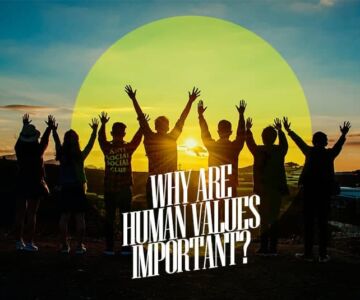 Natural Remedies and Supplements for Better Sleepby admin / July 16, 2024
Natural Remedies and Supplements for Better Sleepby admin / July 16, 2024The Right to Health: Human Rights in Healthcare
In an increasingly interconnected world, the right to health stands as a cornerstone of human rights, highlighting the fundamental need for access to healthcare for all individuals. The World Health Organization (WHO) defines health not merely as the absence of disease but as a state of complete physical, mental, and social well-being. Ensuring this right is not just a matter of policy but a reflection of our collective humanity.
Understanding the Right to Health
The right to health is enshrined in various international treaties and declarations, most notably the Universal Declaration of Human Rights (UDHR) and the International Covenant on Economic, Social, and Cultural Rights (ICESCR). Article 25 of the UDHR states that “everyone has the right to a standard of living adequate for the health and well-being of himself and of his family, including… medical care and necessary social services.” Similarly, Article 12 of the ICESCR recognizes “the right of everyone to the enjoyment of the highest attainable standard of physical and mental health.”
Components of the Right to Health
The right to health encompasses several essential components:
- Availability:
- Definition: Adequate healthcare facilities, goods, and services must be available in sufficient quantity.
- In Practice: This means that hospitals, clinics, and other healthcare facilities should be adequately stocked with medicines, medical equipment, and trained healthcare professionals to meet the needs of the population.
- Accessibility:
- Definition: Healthcare services must be accessible to everyone without discrimination. This includes physical accessibility, economic accessibility (affordability), and information accessibility.
- In Practice: Services should be within safe physical reach for all sections of the population, affordable for all, and people should have the right to seek, receive, and impart information about health issues.
- Acceptability:
- Definition: Healthcare services must be respectful of medical ethics and culturally appropriate.
- In Practice: Health services should be designed with the cultural and social context of the people they serve in mind. This includes respecting the confidentiality of patient information and ensuring that services are culturally sensitive and acceptable to different population groups.
- Quality:
- Definition: Healthcare services must be scientifically and medically appropriate and of good quality.
- In Practice: This means having skilled medical personnel, scientifically approved and unexpired drugs and equipment, and hospital sanitation.
Challenges in Realizing the Right to Health
Despite global recognition, the right to health faces significant challenges:
- Economic Disparities:
- Issue: Economic inequality often results in unequal access to healthcare services, with marginalized communities bearing the brunt of inadequate care.
- Impact: Those in low-income brackets may forego necessary medical treatments due to cost, leading to worse health outcomes and perpetuating cycles of poverty and poor health.
- Geographical Barriers:
- Issue: Rural and remote areas frequently lack healthcare facilities, trained professionals, and essential medicines, exacerbating health disparities.
- Impact: People living in these areas may have to travel long distances to receive care, delaying treatment and increasing the risk of complications and mortality.
- Political Instability:
- Issue: In regions plagued by conflict or political turmoil, healthcare infrastructure is often destroyed, and access to care becomes severely restricted.
- Impact: Populations in these areas may suffer from a lack of basic medical services, outbreaks of diseases, and a decline in overall health status.
- Discrimination:
- Issue: Vulnerable groups, including minorities, refugees, and LGBTQ+ individuals, often face discrimination in healthcare settings, limiting their access to necessary services.
- Impact: Discriminatory practices can lead to mistrust of the healthcare system, lower quality of care, and reluctance to seek medical help, worsening health disparities.
The Role of Governments and International Organizations
Governments and international organizations play a pivotal role in ensuring the right to health:
- Policy and Legislation:
- Action: Governments must enact and enforce policies that promote health equity and protect individuals’ rights to access healthcare services.
- Examples: Implementing anti-discrimination laws in healthcare, establishing universal healthcare systems, and ensuring healthcare is included in national development plans.
- Investment in Healthcare:
- Action: Adequate funding for healthcare infrastructure, workforce training, and essential medicines is crucial for ensuring quality care for all.
- Examples: Increasing budget allocations for health, building and maintaining healthcare facilities, and investing in medical research and education.
- International Cooperation:
- Action: Collaborative efforts, such as global health initiatives and partnerships, are essential for addressing transnational health challenges and supporting health systems in low-income countries.
- Examples: Initiatives like Gavi, the Vaccine Alliance, and the Global Fund to Fight AIDS, Tuberculosis, and Malaria help to provide resources and expertise where they are most needed.
Moving Forward: Ensuring Health for All
To truly realize the right to health, a multifaceted approach is required:
- Universal Health Coverage (UHC):
- Definition: Implementing UHC ensures that all individuals receive the health services they need without suffering financial hardship. This includes preventive, curative, rehabilitative, and palliative care.
- In Practice: Countries like Canada and the UK have models of UHC that provide a framework for ensuring that healthcare services are available to all citizens, regardless of their ability to pay.
- Community Engagement:
- Definition: Engaging communities in health decision-making processes fosters trust, addresses cultural sensitivities, and ensures that health interventions are effective and inclusive.
- In Practice: Community health workers and local health committees can play a crucial role in tailoring health programs to meet the specific needs of different populations.
- Addressing Social Determinants of Health:
- Definition: Tackling the root causes of health disparities, such as poverty, education, and housing, is essential for promoting health equity.
- In Practice: Policies aimed at improving education, economic opportunities, and living conditions can have a significant positive impact on health outcomes.
- Advocacy and Awareness:
- Definition: Raising awareness about the right to health and advocating for policy changes are critical for driving systemic improvements in healthcare access and quality.
- In Practice: Campaigns and movements, such as the Right to Health initiative, work to mobilize public opinion and influence policymakers to prioritize health as a fundamental human right.
Conclusion
The right to health is an essential human right that underpins the well-being and dignity of every individual. While significant progress has been made, substantial challenges remain. By addressing these challenges through concerted efforts at local, national, and global levels, we can move closer to a world where everyone has the opportunity to achieve the highest attainable standard of health.
In recognizing and upholding the right to health, we affirm our commitment to a more just, equitable, and compassionate world. The journey toward health for all requires persistence, collaboration, and an unwavering dedication to the principles of human rights.



